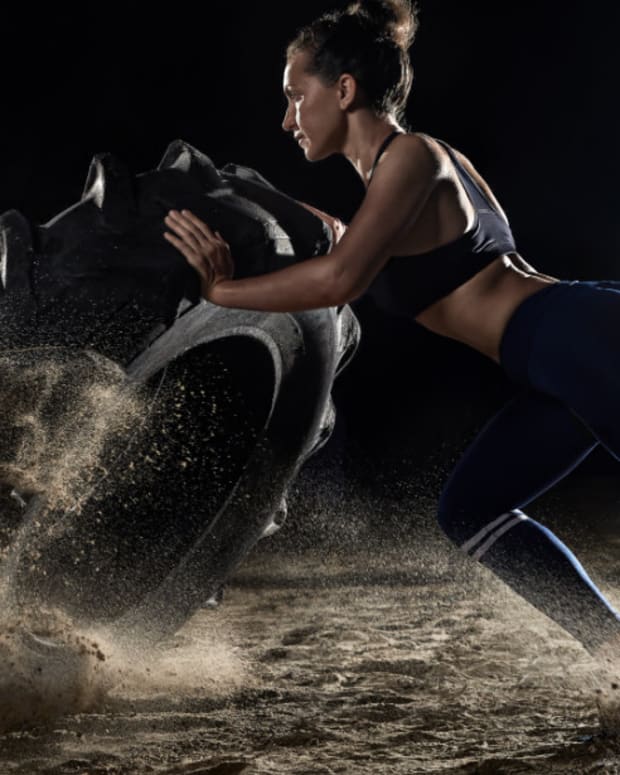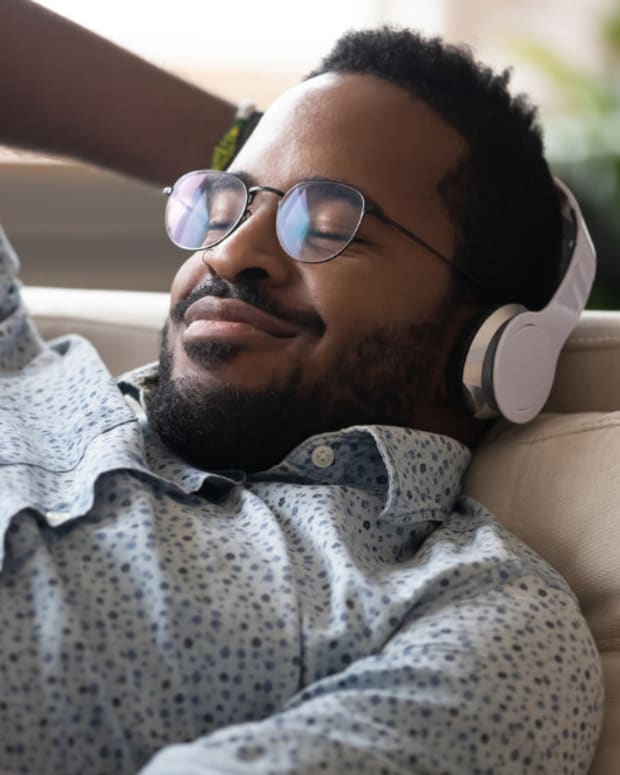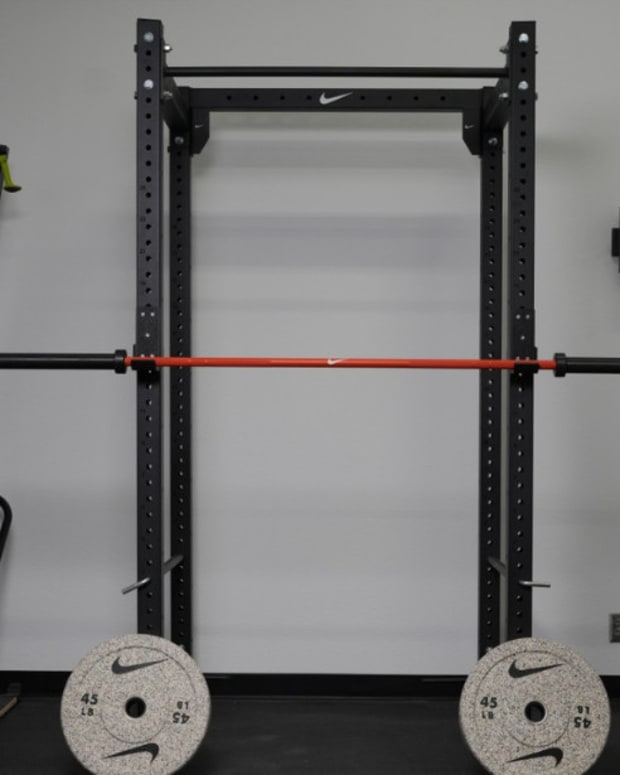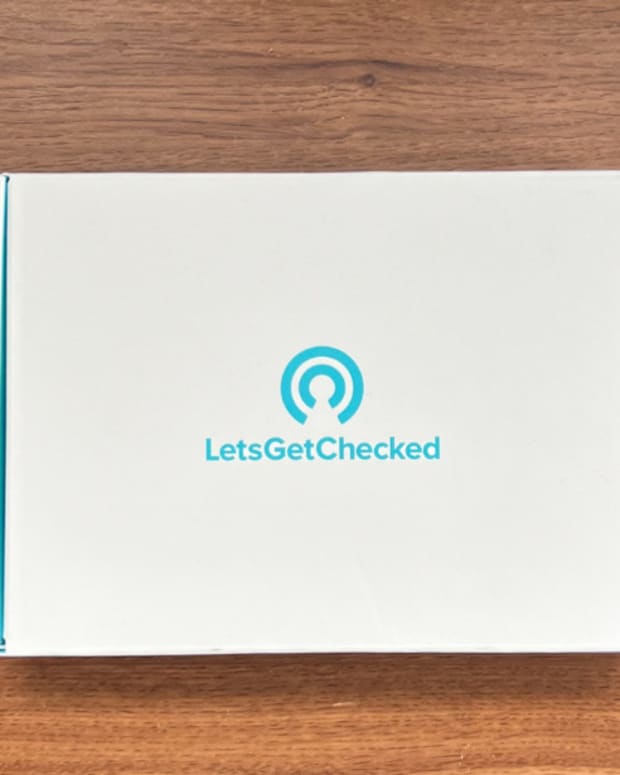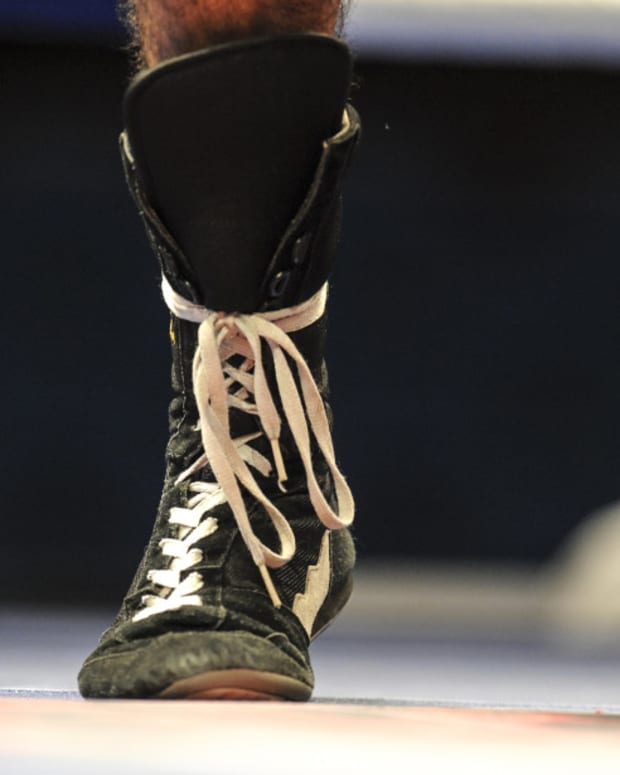The products featured in this article have been independently reviewed. When you buy something through the retail links on this page, we may earn commission at no cost to you, the reader. Sports Illustrated editorial staff are not involved in the creation of this content. Learn more here.
When it comes to lifting weights, far too many people focus on weightlifting belts, gloves and lifting straps, while completely ignoring the gym shoes they choose to wear. Not only can the right shoes boost your performance and help you lift more weight, but the wrong shoes can also be dangerous and increase the risk of injury.
Now, you don’t want to blindly pick up a pair of weightlifting shoes and wear them for every workout. Different shoes serve different purposes, and your training style dictates the type of shoe you should be wearing.
In this 2024 guide, we’ll break down everything you need to know about weightlifting shoes, share our favorite shoes for any training goal and explain exactly how shoes can impact your workout.
Our Picks for the Best Weight Lifting Shoes of 2024:
- Best Overall Weightlifting Shoes: adidas Powerlift
- Best Weightlifting Shoes for CrossFit: Reebok Nano X4
- Best Weightlifting Shoes for Squats: Nike Metcon 9
- Best Weightlifting Shoes for Olympic Lifting: NOBULL Lifter
- Best Weightlifting Shoes for Wide Feet: Do-Win Weightlifting Shoes
Best Overall Weightlifting Shoes: adidas Powerlift 5
Pros:
- The shoe has a moderate heel lift, making it suitable for most types of weightlifting.
- The strap and lace combination, along with a midsole stability wedge, is designed to keep you anchored in place during your most intensive lifts.
Cons:
- If you want the highest possible heel lift, these may be a little bit too low.
- If you’re doing functional training, with a lot of running and dynamic movement, the flat, secure sole may restrict your movement too much.
The adidas Powerlift 5 is the most versatile weightlifting shoe on the market. Featuring a modest heel raise, a flat-soled stable surface, and a combination of laces and straps to keep you secure, this shoe has a smart collection of features that can make nearly any weightlifter happy. Plus, it’s reasonably priced at $130.
The Powerlift 5 doesn’t have the highest heel lift of all the shoes on our list, but unless you specialize in Olympic lifts and prefer the highest possible heel, you shouldn’t have any problems. This shoe is a bit stiff, so walking around for a normal workout may be uncomfortable. For those who train with lots of running, jumping and agility mixed in with their lifting–like CrossFit athletes–this shoe may be a bit too stiff to wear for the entire workout.
If you don’t mind changing into these shoes only when you need them, you’ll love the adidas Powerlift 5.
- Price: At $130, these shoes are right in the middle of the pack. They’re about the same cost as high-end running shoes, but not quite as expensive as some of the other options on our list.
- Material: The canvas upper portion is made of at least 50% recycled materials, for a lightweight, breathable and sustainable fit. The bottom features a rubber outsole to increase traction and stability.
- Color options: The unisex Powerlift 5s are available in three colors.
Best Weightlifting Shoes for CrossFit: Reebok Nano X4
Pros:
- The shoe's Lift and Run Chassis system is designed to bridge the gap between strength training and running.
- The Nano X4 adds denser padding around the ankle collar to provide more of a locked-in fit during lifting exercises.
Cons:
- The flexible, cushioned bottom is designed to add comfort but might not be quite as stable as a pure weightlifting shoe.
- Some reviewers say the Nano X4 runs as much as one size smaller than expected.
As one of the best CrossFit shoes on the market, the newest version of Reebok's Nano series was designed to meet the varied demands of cross-training. What makes the Nano X4 our best weightlifting shoe for CrossFit is the improved Lift and Run Chassis system in the midsole plate.
A TPU (thermoplastic polyurethane) dome under the heel is designed to flatten out under pressure when you're lifting weight for more stability and revert to a dome shape during running to provide responsiveness. Another plus for CrossFitters is the rope guards on the outsole, which provide extra grip during rope climbs.
Related Post: The Best CrossFit Equipment for Your Home Gym
While the Nano X4 currently has an average 4.1 out of 5 star rating on the Reebok website, some reviews cite problems with sizing and fit. The complaints include a narrower sole and a less roomy toe box than previous versions. Cautious shoppers might want to try them on in person before buying.
- Price: These shoes cost $140, which is on the higher end of a mid-range shoe.
- Material: The upper portion is made of Flexweave knit for breathability, and the sole is made from Floatride Energy Foam to provide cushion and comfort.
- Color options: The Nano X2 currently comes in eight colors for unisex models and seven colors for women's.
Best Weightlifting Shoes for Squats: Nike Metcon 9
Pros:
- The Metcon 9 has a larger heel-plate than earlier Metcons to provide a more stable lifting surface.
- The shoe's dual-density foam midsole—softer on the inside and firmer on the outside—is designed to provide cushioning during cardio exercises and lateral movement.
Cons:
- Although good for weightlifting, this shoe lacks the cushioning and overall flexibility for long-distance running.
- Dedicated cross-trainers might be reluctant to pay $150 (regular price) for a shoe that isn't as versatile as some of its competitors.
Although it might not be a pure Olympic lifting shoe like the Nike Romaleos, many users give the Nike Metcon 9 a gold medal for squats. The latest in Nike's Metcon series features a larger Hyperlift heel-plate for better support during lower-body exercises, including squats, lunges and deadlifts. It also has a bigger toe box, and the fabric mesh upper is designed to flex when your toes spread outward during lifting exercises.
While older Metcon models included a removable lifting heel insert, the Metcon 9 features a wide, flat heel for even weight distribution. It’s a modest heel lift that can help you squat more comfortably, but it’s not so high that it disrupts your other training.
The tester who tried the Metcon 7 for our review described the feel of the shoe as "rock solid" while still providing a medium level of flexibility for his side squats and walking lunges. On the other hand, he found them less comfortable for jogging.
For more information, check out our Nike Metcon 9 review.
- Price: The regular price is $150, comparable with some of the other options on our list.
- Material: The bottom portion is made from dual-density foam, wrapped in a full rubber outsole. The upper is made of a lightweight mesh with textured overlays.
- Color options: The Metcon 9 comes in 18 colors for men and 15 colors for women.
Related Post: The Best Squat Machines for Your Home Gym
Best Weightlifting Shoes for Olympic Lifting: NOBULL Lifter
Pros:
- High-quality, durable, hand-crafted shoe built to last.
- The heel lift is designed for Olympic lifting, providing a secure, stable foundation for squats, cleans, jerks and any other Olympic lift.
Cons:
- These shoes are designed purely for weightlifting, so they won’t be the best shoes to walk around in or wear for any sort of cross-training.
- At this price, only having one purpose may be a negative for those who do more than weightlifting.
The NOBULL Lifter is an extremely high-quality, handmade Olympic weightlifting shoe, designed to last with a focus on quality above all else.
This is a simple, raised-heel weightlifting shoe, designed purely for weightlifting. While it doesn’t offer the versatility of the Nano X4 or Metcon 9, this is the highest quality shoe on our list. The NOBULL Lifter also features an 18.5mm heel-to-toe drop, a high lift designed to help Olympic lifters train with a full range of motion.
Each shoe is made with high-quality leather and handmade by a master craftsman. The Lifter's stacked leather heel consists of individually cut layers, bonded, waxed, finished and buffed to reveal the natural grains.
If Olympic lifting is your passion, this shoe is an excellent choice, but if you need something more versatile that can get you through any kind of workout, we’d recommend a different option like the NOBULL Trainer.
- Price: The NOBULL Lifter is an extremely high-quality, handmade shoe, which means it can’t be cheap. At $249, it is the highest-priced shoe on our list.
- Material: The elevated heel is made from multiple layers of wood, and the top features hand-selected, durable leather, rich in natural oils.
- Color options: Both the Men's Lifter and Women's Lifter are available in two colors.
Best Weightlifting Shoes For Wide Feet: Do-Win Weightlifting Shoes
Pros:
- A 0.75-inch hard plastic heel is the ideal height for Olympic lifting.
- The double-strap design will keep your feet securely locked in place.
- A wide design stands apart from the competitors, as these were designed to accommodate even the widest feet.
Cons:
- Like other pure lifting shoes, a steep heel and stiff bottom mean these shoes are best for weightlifting, and won’t work well for other forms of cross-training.
Designed for Olympic weightlifting, the Do-Win Weightlifting Shoes are our pick for anyone looking for a sturdy, high-heeled and wide lifting shoe.
Do-Win intentionally makes its shoes wider than most, looking to provide a comfortable fit for athletes who find other brands' shoes too narrow and restrictive. With a sturdy base, two straps for stability and security and a high-traction sole, we recommend these shoes for any athletes with wide feet who focus primarily on weightlifting movements.
The stiff support means they’re not the best choice for a cross-training shoe, but they’re an excellent choice for Olympic lifting and squatting.
- Price: The Do-Win Weightlifting Shoes have a regular price of $105—more affordable than many other weightlifting shoes.
- Material: Synthetic leather and nylon mesh make up the upper portion, with an elevated hard plastic heel.
- Color options: The Do-Win Weightlifting Shoes come in one color, a unisex black design.
Why Buy Weightlifting Shoes?
While it may seem like a shoe is a shoe, when it comes to weightlifting, this couldn’t be further from the truth. A good weightlifting shoe provides a stable, safe foundation for training, and helps you maintain the proper position for training.
When performing any exercise on your feet, you want to make sure the force your body generates goes directly into the ground, rather than through a cushion.
If you try to strength train with cushioned running shoes, which are designed to absorb impact, you’ll likely feel your feet shifting around and wobbling a bit, which can be dangerous with a heavy load on your back. If you want to feel this at home, try squatting on one leg with a bare foot on the ground, then try the same thing standing on a pillow.
This is a bit more exaggerated than with running shoes, but the same principle applies. It’s not just squatting that requires a stable foundation. Deadlift, overhead pressing, lunging or any other strength-based exercise will be much safer with a firm, steady foundation.
Benefits of Weightlifting Shoes
Safety aside, let’s look at some of the benefits of using a weightlifting shoe, compared to working out barefoot or in sturdy non-running shoes.
Whether you’re using squat shoes, deadlift shoes or Olympic lifting shoes, you’ll find that proper footwear provides a stable, safe foundation for training. Most weightlifting movements, particularly those that use a barbell, involve precise, complex movements.
Lifting shoes that are designed to support the movement you’re training stabilize your foot, help you lift more comfortably and ensure your body stays in the proper position.
Related Post: 10 Best Lifting Straps for Weightlifting
What Kind of Weightlifting Shoes Are There?
We’ll start with squat shoes, which have an elevated heel. By changing the angle of your foot, the biomechanics of the entire exercise change. You’ll feel the movement significantly more in your quads, which is the primary target muscle when squatting, and most users find they can squat much deeper, without having to over-arch their lower back.
If you don’t like the raised heel for your squats, or you’re working on deadlifts, overhead pressing or other movements, you can also use a flat-soled shoe. These are designed to provide zero heel lift and lock your foot into the ground, without providing the unstable cushion of a running shoe.
How to Use Weightlifting Shoes
If you’re using flat-soled shoes, you really don’t need to do anything special. Wear them to the gym, train as you normally would, and consider trading them for cushioned running shoes if you plan to do any cardio or non-lifting activity.
With the elevated heel of squat shoes, you may find that walking around is a bit awkward, with such a high heel lift. The soles often have no give or bend, and the shoes may make your feet feel heavy.
Many weightlifters will wear regular shoes to the gym, and bring their squat shoes in a separate gym bag. This way, you can change into your squat shoes, do your exercises and then put your regular shoes back on when you’re finished.
What to Look for in Weightlifting Shoes
Not all shoes are created equal, and even if you’ve decided on flat shoes versus squat shoes, there are still a range of options to suit your needs. Here are the key points we suggest looking for.
Fit
This may seem obvious, but proper fit is essential. With weightlifting shoes, especially squat shoes, there’s often a Velcro strap that goes over the laces, offering extra support and security, while keeping your laces together.
This means that the shoe may feel slightly narrower than a normal shoe. If you have wide feet, you may need to go up half a size.
Heel height
The height of your heel lift is also important, and most manufacturers sell varying heights depending on your goals. For those with limited ankle mobility, a higher heel makes it easier to squat through a full range of motion without your heel lifting off the ground.
If you’re doing serious Olympic lifting, you’ll likely want to choose a shoe with a steeper heel height, which helps you get into the deep squatting positions, especially with front squats.
If you’re doing a more balanced program, with back squats, overhead presses and lunges, then a smaller heel lift will likely be just fine.
Cost
Finally, you need to consider your budget, and how often you’ll be using these shoes. Weightlifting shoes may be more expensive than regular running shoes, especially those with a high-heel lift. If you know you’re going to be doing serious lifting for years to come, it’s probably worth the investment!
However, if you’re just getting started and want to test the waters of weightlifting shoes, you may want to consider starting with a more affordable pair to see how you like them.
FAQs About Weightlifting Shoes
Are flat shoes best for lifting?
It depends. If you’re squatting, you may want to use a heel lift, allowing you to squat deeper without losing stability. However, some users who have good mobility and no issues with deep squats find that the heel lift is a bit too much.
To test this for yourself, you can try some bodyweight squats at home with your bare feet, and compare it to squatting with your heels slightly elevated, on something like a book.
If you find that squatting with your heels up feels more comfortable, and allows you to squat deeper without your heels lifting on the ground, you’ll likely do well with a heel lift. However, if you prefer the feeling of a flat foot, and don’t notice your heel lifting at the bottom, flat shoes are fine to use.
The only time you should avoid an elevated heel is when performing deadlifts, though it’s easy to bring along a pair of flat shoes, or even deadlift in your socks if the gym allows it.
How do I pick a powerlifting shoe?
When powerlifting, you should consider the needs of your sport. Powerlifting involves the bench press, squat and deadlift, so you’ll likely need multiple pairs of shoes, with a different pair for whatever you’re training that day.
For deadlifting, flat shoes are generally recommended since the movement involves sitting back on your heels, and you shouldn’t have any heel lift. With squatting, a heel lift will be helpful, and with the bench press, the shoe choice doesn’t make much of an impact.
Many powerlifters will wear a flat-soled shoe–like the Chuck Taylor–the majority of the time, and change into squat shoes when squatting or using the leg press machine.
Are running shoes good for lifting?
No, running shoes are not ideal for weightlifting. If you’re simply strength training with some machines or light dumbbells, you’ll be fine, but if you’re doing heavy barbell lifts, running shoes don’t provide a stable base for training.
Even with movements like lunging or step-ups, most lifters find that running shoes don’t offer enough stability to safely train.
Related Posts: Best Running Shoes for Men and Best Running Shoes for Women
Should I wear lifting shoes for deadlifts?
This is completely optional!
For deadlifts, you want a flat foot, so flat-soled shoes or even barefoot is most ideal. Now if you’re training in a commercial gym, check the rules before taking your shoes off, as many facilities require shoes at all times.
However, if you’re lifting at home, or in a powerlifting-focused gym, you may be able to deadlift in your socks. And wherever you are, deadlifting in flat-soled shoes is always a good idea.
Outside of that, lifting shoes are optional for deadlifts.
Related Post: The Best Barefoot Shoes
Final Thoughts
For anyone serious about strength training, weightlifting shoes are a fantastic investment. Whether you’re looking for a pure Olympic lifting shoe like the Do-Win Weightlifting Shoe or a more versatile option like the Nike Metcon, you’re sure to find what you need on this list.
Prices are accurate and items in stock as of publishing time.






